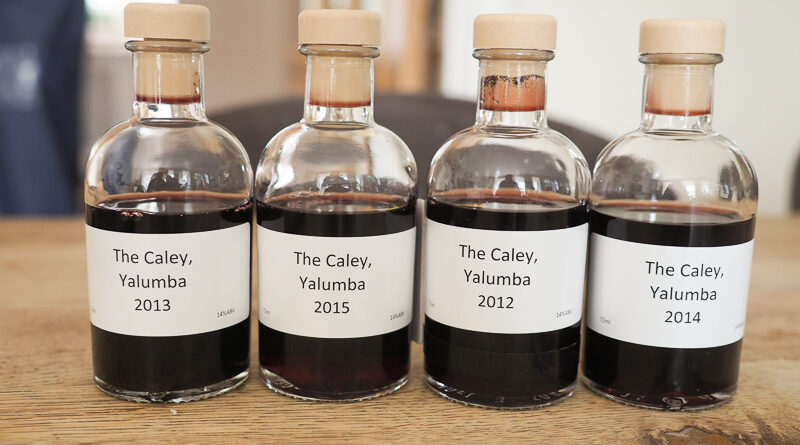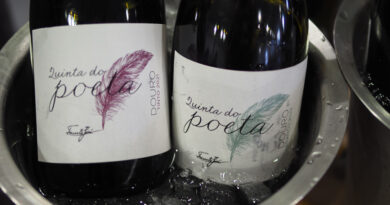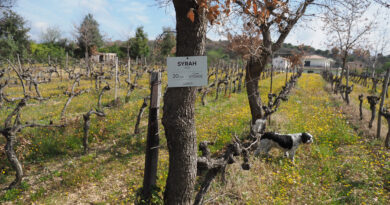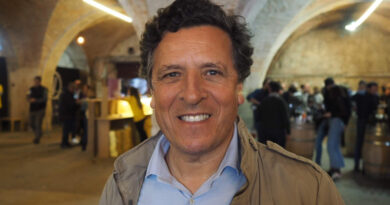Yalumba The Caley: a mini-vertical of their top ‘Super Claret’
It is a little-known fact that in the 19th century, the Bordelais used to blend in some Syrah from Hermitage into their wines specifically for the English market. We Brits apparently had a preference for richer wines than Bordeaux was typically making at the time. Indeed, Château Palmer still make small quantities of a Hermitaged claret, with some Syrah from the northern Rhône in the mix (around 14%), although this can’t be labelled as Bordeaux. This blend of Cabernet Sauvignon with a bit of Shiraz is the great Australian red – the ‘Super Claret’ – of which Yalumba’s Caley is a high-end new addition to this category.
Robert Hill-Smith (5th generation) and his daughter Jess (6th generation) presented this tasting of four vintages of the Caley. They made it first in 2012, and released this in 2017. The four we tasted today were 2012-2015 inclusive, with the latter being the current release.
The Caley is Yalumba’s top wine, a Super-Claret named after Fred Caley Smith, born in 1864. ‘He’s become a very important character in our Yalumba history book,’ says Jess. There’s a staircase in the clocktower building at Yalumba’s Eden Valley (Barossa) HQ, and when they renovated it they found a box full of old letters from Fred under the stairs. Fred is her great, great uncle. He was the eldest son in his family. A horticulturist, instead of taking over the family business he decided instead to travel and explore, to find out more about horticulture. He set sail as a 27 year old in 1893 on this grand adventure. These letters are a travel journal of his adventures, and the wine is named after him.
Yalumba has established a reputation for making enjoyable wines with personality, and a bit of seriousness, but it has struggled a bit to attain the sort of reputation it would like for its more high end wines. ‘In the past people might have said Yalumba makes lovely wine but nothing that rocks my boat,’ says Robert. ‘Our determination has been to throw this judgement aside, and join the leading Australian winemakers.’
The Caley is an attempt to do this. ‘It’s about removing our light from under a bushel,’ he says. The first vintage they made the wine was a good one: 2012 was an exceptional vintage. The wine was nicknamed the ‘Super Claret’ as a hat tip to the classic blends of Shiraz and Cabernet from the past. The winemaking team had a blank canvas in terms of fruit selection. Their brief: to make the best they could. In the 19th century, Australian ‘Clarets’ were about full-bodied firm finished red wines, blending Cabernet and Shiraz, and this was the model they followed.
The two main Cabernet regions in Australia are Margaret River and Coonawarra. Yalumba chose Coonawarra Cabernet and Barossa Shiraz to make this wine.
Robert says that his ambition with this wine is to join the ranks of the highest-regarded Australian wines. Although he doesn’t mention them by name, he’s presumably referring to two Shiraz wines, Penfolds Grange and Henschke’s Hill of Grace.
This is by far Yalumba’s most expensive wine, retailing at about £270 in the UK (In Australia, A$365). ‘Coming out with a wine that was a bit expensive, a lot of people thought we were pretty cheeky,’ says Robert. ‘We felt we’d earned our stripes in the previous 163 years of making wine.’ 500 twelve-bottle cases are released each year.
The Cabernet for The Caley comes from a block in their Menzies vineyard in Coonawarra. This is the main component of the wine. The Shiraz comes from a range of different Barossa sites (initially four, but now narrowed down to just two).
Ageing is mostly in French oak, but there’s a bit of Hungarian in the mix. 40% is new each year.
I like the fact that this wine is aiming at restraint and balance, with a strong structural and savoury component to the flavour. But they do close down a bit it seems: these wines need proper cellar time. The style has moved around a bit, but it’s hard to know whether this is vintage variation or stylistic tuning on the blending and winemaking front.
THE WINES
Yalumba The Caley 2012 South Australia
‘I think this is going through a tertiary change,’ says Robert. ‘This was always to me a sophisticated wine.’ This shows good concentration, with some nice savoury, spicy, tarry gravelly notes under the sweet red and black fruits. There’s a bit of leafiness here. It’s ripe and concentrated with some sweetness, and a bit of warmth on the palate. It’s at a slightly awkward, gangly teenage stage now: I’ve no doubt this will age really nicely, but it’s showing neither its primary or aged complexity at the moment. Hold if you have some. 92/100
Yalumba The Caley 2013 South Australia
Quite taut and intense, with acid poking out a bit from the generous, sweet blackcurrant and red cherry fruit, with some savoury, spicy notes. Has some intensity here with a linear drive, some orange peel, a bit of tar and some grippy tannins on the finish. A very intense wine that’s a little hard and undeveloped at the moment. It has shed its primary fruit. Grippy, and with the acid a little high in the mix right now. Another one to lose in the cellar: it’s not for broaching now. 93/100
Yalumba The Caley 2014 South Australia
Higher proportion of Coonawarra Cabernet in the blend (82%). Intriguing nose that’s gravelly and tarry with nice blackcurrant fruit. It’s quite savoury. The palate is balanced and restrained, with the dark, savoury gravelly characters countering the sweet blackcurrant and red berry fruit. It’s fresh, with some acid backbone showing up on the finish. Intriguing stuff, showing some nice perfume, some spice, and a touch of minty green. A little angular, and worth cellaring for a while. 92/100
Yalumba The Caley 2015 South Australia
74% Coonawarra Cabernet Sauvignon and 26% Shiraz (Bergemeister 1901 and the Yalumba Horseshoe Block in the Eden Valley). This is a concentrated, ripe wine showing nice precision. It is rounded and intense, with some fruit generosity (blackcurrant and blackberry, as well as some red berries), but also good acidity and structure. Lots of intensity here with taut but textural blackcurrant and cherry fruit on the finish, as well as some citrus peel notes and a bit of acid sticking out. There’s a nice combination of the sweet and savoury, and it’s built for the long haul. It’s the stand-out of these four wines. 94/100
Find these wines with wine-searcher.com




